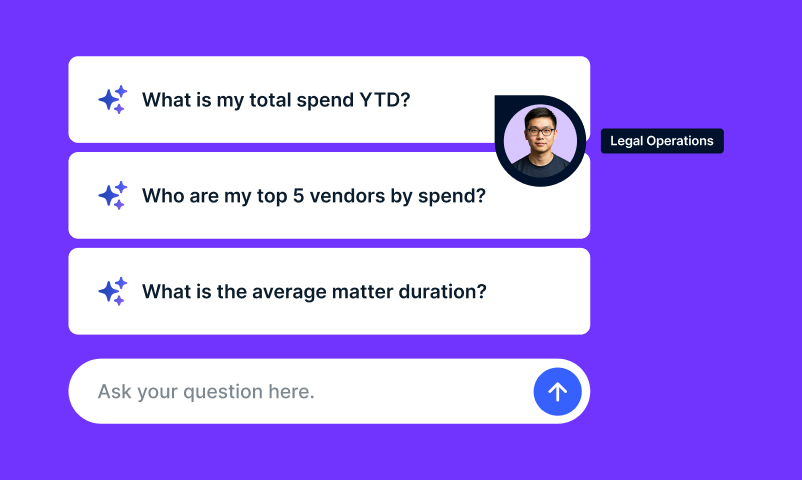
Selbst viele erfahrene CFOs und hochentwickelte Finanzabteilungen tun sich schwer damit, Ausgaben angemessen zu prognostizieren und somit die erforderlichen Schritte in Buchhaltung und Rechnungswesen zu betreiben.
Wahrscheinlich geht es Ihnen ähnlich – Sie wissen, dass es an der Zeit für Veränderung ist, sind jedoch vom Angebot überwältigt und fragen sich, wer Ihnen die maximale Datensicherheit bieten kann? Sie sind bereits überzeugt von dem Mehrwert, den Ihnen juristische eBilling Software bieten kann und benötigen nun Unterstützung dabei, Ihre Legal Operations Prozesse zu digitalisieren?
Es gibt gute Gründe, auf die Sicherheit Ihrer Daten zu achten. So kann es zum Beispiel durchaus vorkommen, dass einige Anbieter ihre Software nicht vorab auf kundenspezifische Anforderungen testen, was Sie und Ihr Team bei der Implementierung dieser Software vor große Herausforderungen stellt. Gleichzeitig birgt gewisse Software die Gefahr, durch unpassende Prozesse und Funktionen Ihre tägliche Arbeit sogar zu erschweren oder stellt Sie – im äußersten Fall – sogar beim etwaigen Durchdringen wichtiger Rechnungsinformationen vor elementare Haftungsfragen.
LEGAL EBILLING: MERKMALE DIE IHNEN HELFEN, DIE SICHERHEIT IHRER POTENZIELLEN RECHNUNGSSOFTWARE ZU BEURTEILEN
Im Folgenden finden Sie sieben Kriterien, mit denen Sie dafür Sorgen können, dass Ihre Daten in der ausgewählten Anwendung sicher sind:
- Anbieterauswahl: Wählen Sie einen Anbieter, der das Thema Informationssicherheit ernst nimmt. Unsere Legal Spend Management-Lösung BusyLamp eBilling.Space ist ISO 27001-zertifiziert, was bedeutet, dass wir über spezifische Richtlinien und Verfahren zum Identifizieren und Kontrollieren von Datenrisiken verfügen.
- Softwareauswahl: Entscheiden Sie sich für eine Software mit einer repräsentativen Erfolgsbilanz. Wir arbeiten mit vielen Finanzinstituten, Banken und Anwaltskanzleien zusammen und weisen daher die notwendige Expertise hinsichtlich komplizierter regulatorischer Anforderungen auf. Wir verwenden daher ausgefeilte Verschlüsselungstechniken sowie anspruchsvolle Passwortkriterien, um Ihre sensiblen Daten bestmöglich zu schützen.
- Fragenkatalog: Bevor Sie eine eBilling-Software wählen, sollten Sie sich relevante Fragen genau formulieren. Wie können Sie zum Beispiel Ihre Daten und Abrechnungsinformationen davor schützen, dass sie durch unbefugten Zugriff, Manipulation oder gar Zerstörung (etwa durch einen Brand oder Unfall) gefährdet sind?
- Wachsamkeit: Seien Sie wachsam und systematisieren Sie das Überprüfen und Sichern von Daten. Selbst wenn die besten Hacker Ihre Systeme nicht knacken können, sollten Sie dennoch Anomalien oder Schwachstellen identifizieren, um Probleme zu vermeiden.
- Professionalität: Vermeiden Sie die Verwendung von ungetesteten eBilling-Lösungen. Unser skalierbares SaaS-Modell ermöglicht es uns, verschiedene Module rund um Ihre Legal Operations anzubieten. Unsere Produkte sind professionell und einzigartig.
- Geschwindigkeit: Reagieren Sie sofort, wenn Sie ein Sicherheitsproblem erkennen. Schnell genug erkannt, kann eine Datenpanne oder der Verlust von wichtigen Informationen eingedämmt werden. Indem Sie Ihre Abrechnungsprozesse präzise und genau verfolgen, können Sie schneller reagieren, falls ein Problem auftritt.
- Verschlüsselung BusyLamp ist Vorreiter in Sachen End-to-End-Kommunikationsverschlüsselung.
Lesen und bookmarken Sie unsere Checkliste für weitere Überlegungen zur Datensicherheit.
Wir würden gerne mehr über Ihre Bedenken bezüglich Legal eBilling erfahren und Ihnen helfen, eine Lösung zu finden, die für Ihr Team und Budget geeignet ist. Treten Sie mit uns in Kontakt.
Aus dem englischen Originalblog übersetzt.








